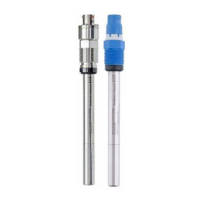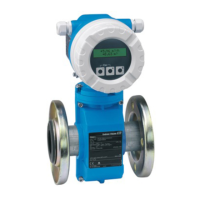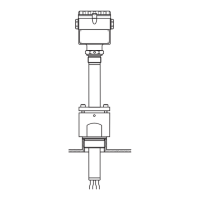Calibration and adjustment Oxymax COS22
16 Endress+Hauser
7 Calibration and adjustment
Calibration is a means of adapting the transmitter to the characteristic values of the
sensor.
Calibration of the sensor is required after:
• Initial commissioning
• Changing the membrane or electrolyte
• Long pauses in operation without power supply
Within the framework of system monitoring and supervision, for example, the calibration
can also be cyclically monitored (at typical time intervals, depending on operating
experience) or renewed.
7.1 Types of calibration
You can carry out a slope or zero point calibration for the sensor.
In most applications, single-point calibration in the presence of oxygen is sufficient
(=calibration of the sensor slope). When switching from process to calibration conditions,
you have to allow a longer settling time for the sensor.
The additional calibration of the zero point improves the accuracy of the measurement
results at trace concentrations. You can calibrate the zero point using nitrogen (min.
99.995%) or oxygen-free water. Make sure that the sensor is polarized and the measured
value is settled at the zero point (at least 20-30 minutes) to prevent later incorrect
measurements at trace concentrations.
The following describes calibration of the slope in air (saturated with water vapor) as the
easiest and recommended calibration method. However, this type of calibration is possible
only if the air temperature is ≥ 0 °C (32 °F).
7.2 Calibration in air
1. Remove the sensor from the medium.
2. Clean the outside of the sensor with a damp cloth.
3. Allow approx. 20 minutes for the sensor temperature to adapt to the ambient air.
Make sure that the sensor is not exposed to any direct ambient influences (direct
sunlight, drafts) during this time.
4. When the measured value display on the transmitter is stable, carry out the
calibration according to the operating instructions for the transmitter. Pay particular
attention to the software settings for the stability criteria for calibration.
5. Where necessary:
Adjust the sensor.
6. Then insert the sensor into the medium.
Make sure you comply with the instructions for calibration in the Operating
Instructions of the transmitter.

